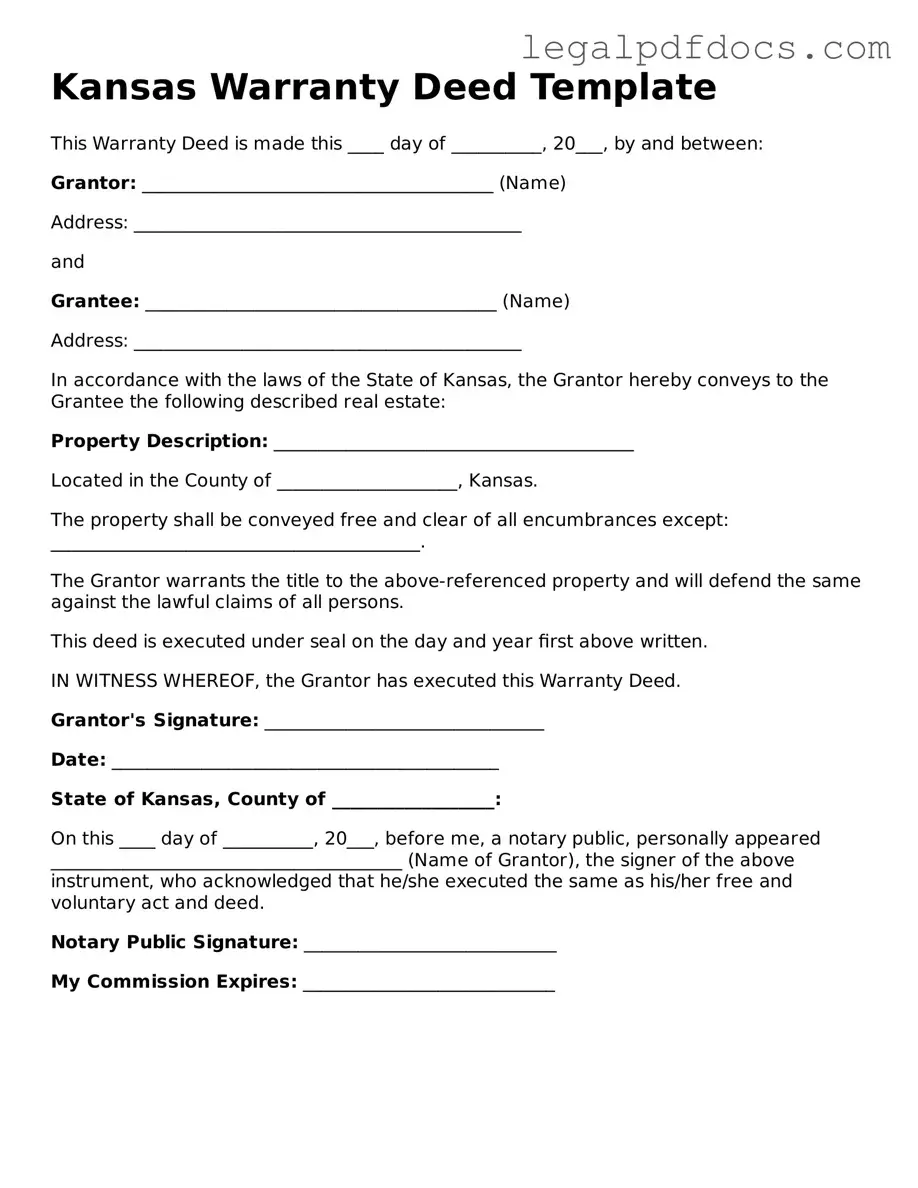In the realm of property ownership, the Kansas Deed form serves as a crucial document, facilitating the transfer of real estate from one party to another. This form encapsulates essential information, including the names of the grantor and grantee, a legal description of the property, and the consideration, or payment, involved in the transaction. It not only outlines the rights being transferred but also ensures that the transfer complies with state laws, thereby protecting the interests of both parties. Various types of deeds exist in Kansas, such as warranty deeds and quitclaim deeds, each serving distinct purposes and offering different levels of protection. Understanding the nuances of these forms can empower individuals to navigate the complexities of real estate transactions with confidence. As property ownership can significantly impact one’s financial future, grasping the importance and function of the Kansas Deed form is essential for anyone looking to buy or sell property in the Sunflower State.
